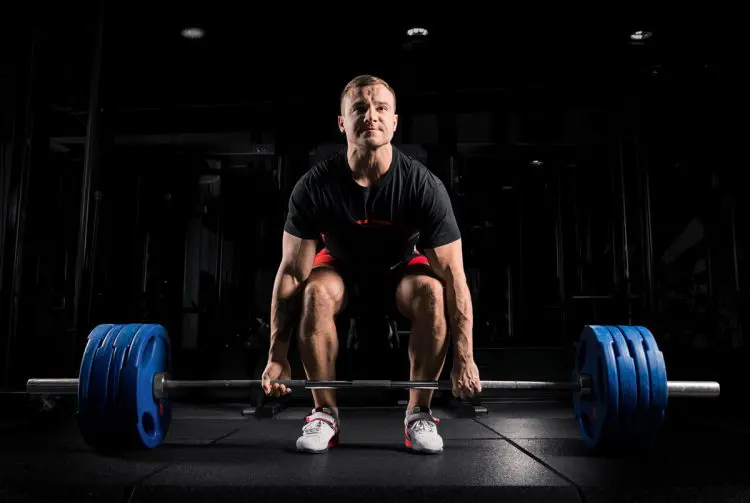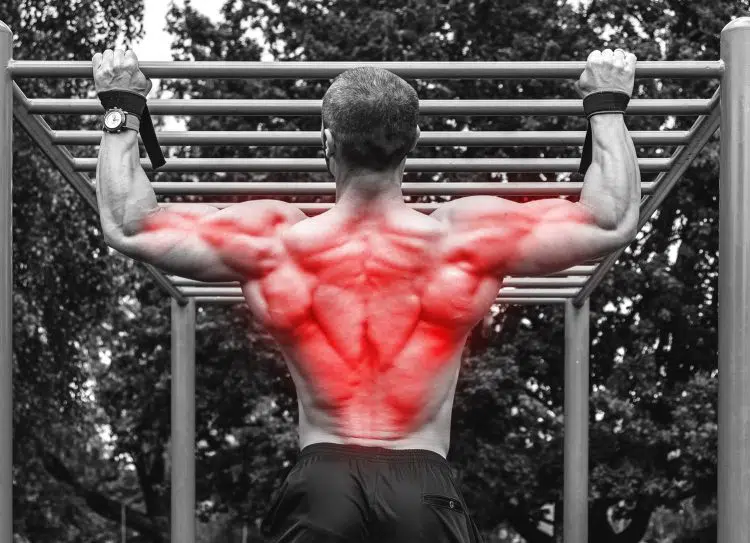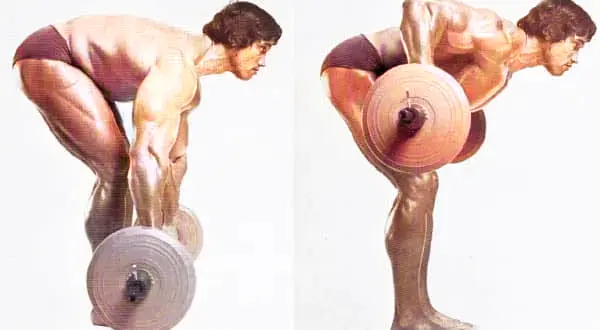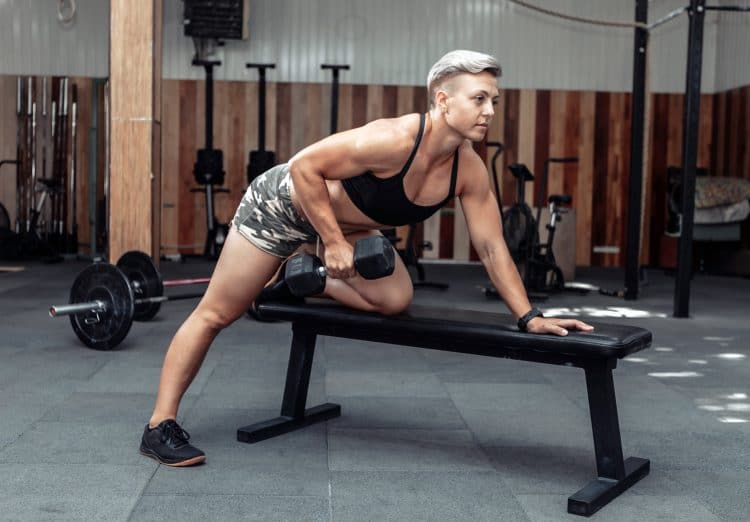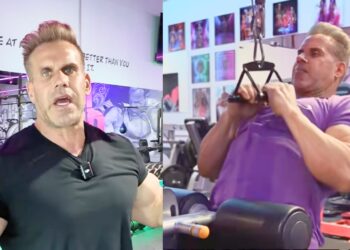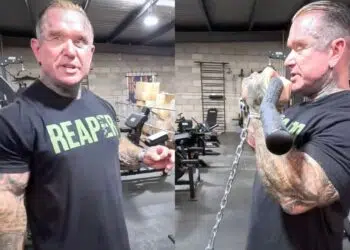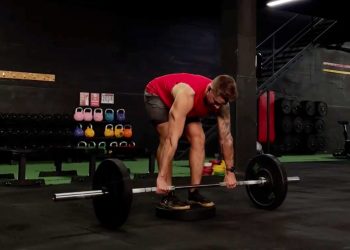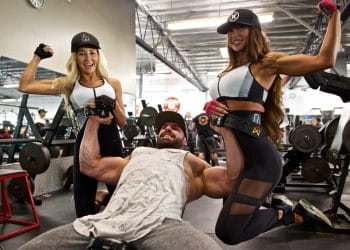Whether you’re following the push/pull/legs workout or doing any other kind of training split, it’s usually best to do the same number of pulling and pushing exercises. This will ensure that both sides of your body and all the associated muscle groups are developed equally.
Doing the same amount of pushing and pulling could also help prevent injuries by preventing muscle or strength imbalances. Pulling exercises are also generally good for your posture.
As a seasoned personal trainer who’s been sculpting strong backs for over 35 years, I’m spilling the beans on my 13 favorite pulling exercises — the ones that’ll give you a seriously impressive posterior chain.
Recent Updates: On June 19, 2024, Fitness Volt’s Senior Editor, Vidur Saini (American Council on Exercise-CPT), updated the article and added actionable expert tips throughout the piece to improve the reader experience.
Level Up Your Fitness: Join our 💪 strong community in Fitness Volt Newsletter. Get daily inspiration, expert-backed workouts, nutrition tips, the latest in strength sports, and the support you need to reach your goals. Subscribe for free!
13 Best Pull Exercises
Need to do more pulling exercises? These are some of the best pulling exercises around:
- Deadlifts
- Pull-Ups And Chin-Ups
- Lat Pulldown
- Barbell Bent-Over Row
- T-Bar Row
- Pendlay Row
- Yates Row
- Chest-Supported Incline Row
- Single-Arm Dumbbell Row
- Cable Face Pull
- Shrugs
- Body Rows
- Biceps Curls
1. Deadlifts
| Sets & Reps | Equipment Needed | Target Muscles |
| Strength: 3-5 x 3-6; Hypertrophy: 3-4 x 8-12 | Barbell, Weights | Glutes, Hamstrings, Erector Spinae, Core |
Deadlifts are at the top of my pull exercise list for a reason — they’re the best! The mighty deadlift works every posterior chain muscle. They also teach you the safest, most effective way to lift a heavy object off the floor, i.e., using your legs and back and without rounding your lumbar spine.
It really doesn’t matter what you are training for; deadlifts should be part of your workouts.
“The deadlift is not just a back exercise. It’s a full-body movement that, when done correctly, can build strength and muscle like no other exercise,” says Saini.
Pro Tip: Initiate the pull by engaging your lats and driving your feet through the floor, not by yanking with your arms.
| Difficulty | Progression | Regression |
| Advanced | Deficit Deadlifts, Romanian Deadlifts | Trap Bar Deadlifts, Kettlebell Deadlifts, Hip Thrusts |
Learn how to deadlift here, and discover the best deadlift variations here.
2. Pull-ups and Chin-ups
| Sets & Reps | Equipment Needed | Target Muscles |
| Strength: 3-5 x AMRAP (As Many Reps as Possible); Hypertrophy: 3-4 x 8-12 | Pull-up bar | Lats, Biceps, Forearms, Upper Back, Core |
When it comes to low-tech but high-effect pulling exercises, pull-ups and chin-ups are the undisputed kings. You can do pull-ups and chin-ups anywhere you can find something to hang from — the pull-up bar, a tree branch, a garage roof rafter, a doorframe. Better yet, get yourself a power tower so you can do pull-ups at home.
Regardless of whether you do pull-ups (pronated grip) or chin-ups (supinated grip), these two exercises provide your upper back and biceps with a great workout.
Pro Tip: Vary your grip width and hand position (supinated for chin-ups, pronated for pull-ups) to stimulate different muscle fibers and challenge your grip strength.
| Difficulty | Progression | Regression |
| Advanced | Weighted Pull-ups/Chin-ups, L-sit Pull-ups | Assisted Pull-ups/Chin-ups, Negative Pull-ups |
Discover the differences between and how to do these two excellent exercises here.
3. Lat Pulldown
| Sets & Reps | Equipment Needed | Target Muscles |
| Strength: 3-5 x 6-8; Hypertrophy: 3-4 x 10-15 | Lat Pulldown Machine | Lats, Biceps, Middle Back |
Whether you are not quite strong enough to do pull-ups and chin-ups or want to vary the weight more easily, lat pulldowns are a great choice. They work your lats and biceps, and you can use several handles and variations to make your workouts varied and interesting.
Most gyms have a lat pulldown machine, and this exercise in all its forms is very popular. That’s because it works!
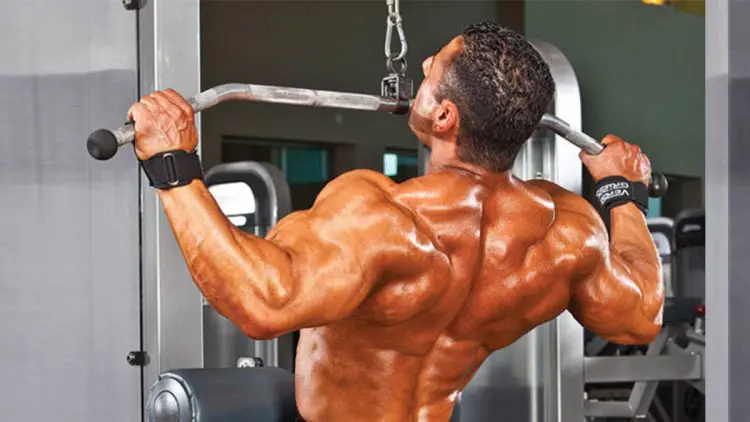
Pro Tip: Instead of focusing on pulling the bar down, visualize pulling your elbows towards your hips while maintaining a slight lean back.
| Difficulty | Progression | Regression |
| Intermediate | Increased weight, V-bar Pulldowns | Assisted Lat Pulldowns, Band Pulldowns |
Follow the links to learn how to do these lat pulldown variations:
- Wide grip lat pulldown
- Medium grip lat pulldown
- Close grip lat pulldown
- Reverse grip lat pulldown
- One-arm lat pulldown
4. Barbell Bent-Over Row
| Sets & Reps | Equipment Needed | Target Muscles |
| Strength: 3-5 x 6-8; Hypertrophy: 3-4 x 10-15 | Barbell, Weights | Lats, Rhomboids, Traps, Rear Deltoids |
Bodybuilders have a saying: if you want to grow, you gotta row! Rows give your back thickness, while lat pulldowns, pull-ups, and chin-ups tend to develop back width. There are several rowing exercises that you can use to build a bigger back. Still, the barbell bent-over row is an old-school favorite. Not only does it work your upper back, but it’ll develop your lower back too.
The barbell bent-over row is a somewhat controversial exercise because many lifters tend to round their lower backs during it, which could cause injury. But, done correctly, it’s one of the best back-building exercises around.
Pro Tip: Experiment with different grip widths (close, medium, wide) to alter the emphasis on different back muscles and challenge your grip strength.
| Difficulty | Progression | Regression |
| Intermediate | Pendlay Rows | Dumbbell Bent-Over Rows, Inverted Rows |
Learn how to do bent-over rows here.
5. T-Bar Row
| Sets & Reps | Equipment Needed | Target Muscles |
| Strength: 3-5 x 6-8; Hypertrophy: 3-4 x 10-15 | T-Bar Machine/Landmine Attachment | Lats, Rhomboids, Traps, Rear Deltoids |
T-bar rows are slightly more lower-back friendly than regular barbell bent-over rows. You can also adjust your grip to target different parts of your back. As such, they’re an immensely popular upper back exercise.
No T-bar machine at your gym? No problem! You can also do T-bar rows using a device called a landmine or just by wedging the end of a barbell into a corner.
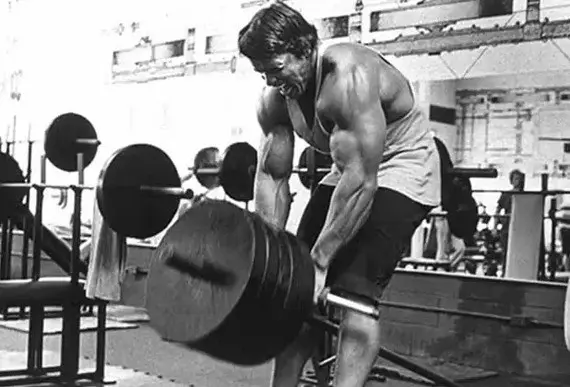
Pro Tip: Control the eccentric phase of the lift (lowering the weight) to maximize muscle fiber recruitment and time under tension.
| Difficulty | Progression | Regression |
| Intermediate | Meadows Rows | Dumbbell Bent-Over Rows, Inverted Rows |
Learn more about T-bar rows here.
6. Pendlay Row
| Sets & Reps | Equipment Needed | Target Muscles |
| Strength: 3-5 x 5-7; Hypertrophy: 3-4 x 8-12 | Barbell, Weights | Lats, Rhomboids, Traps, Rear Deltoids |
Also known as dead-stop rows, Pendlay rows were invented by and named after legendary American weightlifting and powerlifting coach Glen Pendlay.
Each rep starts with the barbell resting on the ground, giving your grip and lower back a short break so you can use more weight or crank out more reps. Pendlay rows can also be done using dumbbells or kettlebells and using one arm at a time.
Pro Tip: Use a slight hip hinge to initiate the movement and maintain a neutral spine throughout the lift.
| Difficulty | Progression | Regression |
| Intermediate | Seal Rows | Barbell Bent-Over Rows, Inverted Rows, Single-Arm Dumbbell Rows |
Read all about Pendlay rows in our in-depth guide.
7. Yates Row
| Sets & Reps | Equipment Needed | Target Muscles |
| Strength: 3-5 x 6-8; Hypertrophy: 3-4 x 10-15 | Barbell, Weights | Lats, Traps, Rear Deltoids, Biceps |
Named after bodybuilder Dorian Yates, six-time Mr. Olympia winner, the Yates row is a barbell bent-over row variation. It’s done using a shoulder-width, underhand grip. However, the main difference between Yates rows and other rowing variations like Pendlay rows and T-bar rows is the angle of the torso.
Instead of bending over until your upper body is parallel to the floor, with Yates rows, you only lean forward about 45 degrees. This takes stress off your lower back and allows you to lift more weight.
Yates had one of the best backs in the history of bodybuilding. While you may never match “The Shadow” for his back thickness and width, this exercise should still help you build the back of your dreams.
Level Up Your Fitness: Join our 💪 strong community in Fitness Volt Newsletter. Get daily inspiration, expert-backed workouts, nutrition tips, the latest in strength sports, and the support you need to reach your goals. Subscribe for free!
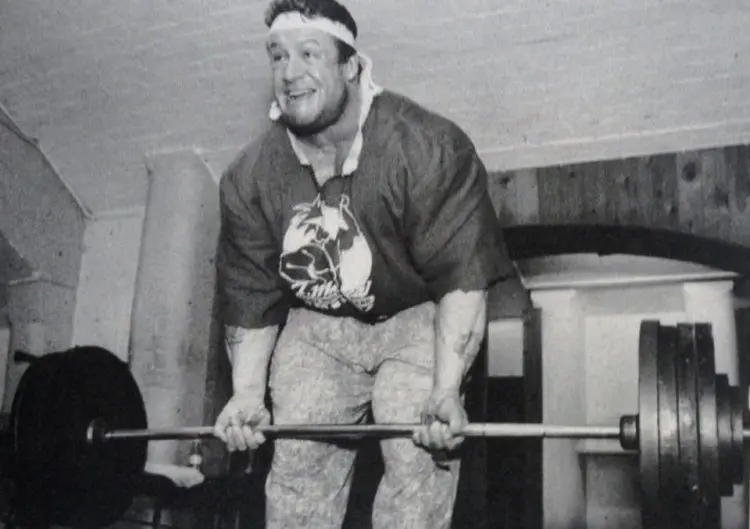
To do the Yates row:
- Hold a barbell with a supinated (underhand) shoulder-width grip. Use lifting straps if you are going really heavy. You can deadlift the bar from the floor to get into position or, a better choice, place the bar in a power rack or on blocks and lift it from mid-thigh height.
- Pull your shoulders down and back, brace your core, stand with your feet roughly hip-width apart, and bend your knees slightly.
- Without rounding your lower back, hinge forward from the hips. Lean forward until your torso is angled to around 45-degrees. The bar should be just above knee height.
- Bend your arms and pull the bar up and into your upper abdomen/sternum. Tuck your elbows in as you pull.
- Squeeze your shoulders back and together briefly and then lower the bar, maintaining your core tension and neutral spine.
- Pause at the bottom of the rep to briefly stretch your upper back and then repeat.
Pro Tip: Keep your torso steady during the exercise to limit the risk of lower back strain.
| Difficulty | Progression | Regression |
| Intermediate | Slow tempo | Barbell Bent-Over Rows, Inverted Rows, Single-Arm Dumbbell Rows |
Learn even more about Yates rows here.
8. Chest-Supported Incline Row
| Sets & Reps | Equipment Needed | Target Muscles |
| Strength: 3-5 x 6-8; Hypertrophy: 3-4 x 10-15 | Incline Bench, Dumbbells | Lats, Rhomboids, Traps, Rear Deltoids |
Many pulling exercises work your upper back and lower back simultaneously. While that may be useful for training efficiency, it could be a problem if you want to do several similar exercises in the same workout. Once your lower back starts to fatigue, you could find it beginning to round, which could cause lower back pain and even injury.
This exercise takes all the stress off your lower back, leaving you free to focus on training your main pulling muscles. You can do chest-supported rows using dumbbells or a barbell as preferred.
Pro Tip: Pause at the top of each rep and squeeze your shoulder blades together to maximize muscle contraction.
| Difficulty | Progression | Regression |
| Beginner | Pendlay Rows | Inverted Rows, Australian Pull-ups |
Discover how to do chest-supported rows here.
9. Single-Arm Dumbbell Row
| Sets & Reps | Equipment Needed | Target Muscles |
| Strength: 3-5 x 6-8 (per arm); Hypertrophy: 3-4 x 10-15 (per arm) | Dumbbell | Lats, Rhomboids, Traps, Rear Deltoids |
Single-arm dumbbell rows allow you to focus on working one side of your body at a time. This is useful for strengthening the mind-muscle connection and ensuring that both sides of your body are developed equally. Best of all, doing one-arm rows means you’ve got an arm free to support and take stress off your lower back.
“Unilateral movements like the single-arm dumbbell row help identify and correct muscle and strength imbalances,” says Saini.
Pro Tip: Rotate your torso slightly towards the dumbbell as you row to increase the range of motion and further activate the lats.
| Difficulty | Progression | Regression |
| Beginner | Barbell Bent-Over Rows | Single-Arm Cable Rows, Inverted Rows |
Find out how to do single-arm rows here or, for a similar but more intense workout, try Kroc rows.
10. Cable Face Pull
| Sets & Reps | Equipment Needed | Target Muscles |
| Strength: 3-5 x 10-12; Hypertrophy: 3-4 x 15-20 | Cable Machine | Rear Deltoids, Traps, Rhomboids |
If you do a lot of bench presses, you should also do plenty of face pulls. This exercise works the opposite muscles to the bench press, making them the ideal counterpart for the world’s most favorite chest exercise! So try doing a set of face pulls between sets of bench presses to improve upper back stability for a bigger, safer bench press.
Per Saini, the cable face pull is a must-do exercise for healthy shoulders. It strengthens the rear deltoids and external rotators, which are often neglected.
Pro Tip: At the end of each rep, externally rotate your shoulders to engage the rear deltoids and maximize muscle activation fully.
| Difficulty | Progression | Regression |
| Beginner | Cable Rear Delt Flyes | Band Face Pulls |
Find out more about cable face pulls here.
11. Shrugs
| Sets & Reps | Equipment Needed | Target Muscles |
| Strength: 3-5 x 5-8; Hypertrophy: 3-4 x 10-15 | Dumbbells, Barbell, Trap Bar | Upper Traps |
Most pulling exercises are compound in nature, meaning they involve multiple muscles and joints working together. Shrugs are slightly different because they involve fewer muscles and just one joint. This makes them an isolation exercise.
Shrugs work your upper traps, which is another important pulling muscle. You can do shrugs with a barbell, dumbbells, or a trap bar.
Saini advises against rolling your shoulders during shrugs. This can lead to impingement. Instead, focus on elevating your shoulders straight up and down.
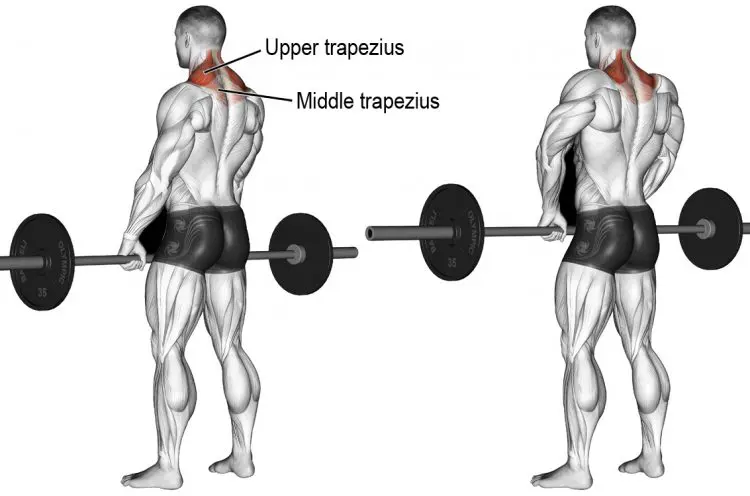
Pro Tip: Experiment with different shrug variations (dumbbell, barbell, trap bar) to target different parts of the traps and upper back.
| Difficulty | Progression | Regression |
| Beginner | Farmer’s Walk | Dumbbell Shrugs, Scapular Pull-ups |
12. Body Rows
| Sets & Reps | Equipment Needed | Target Muscles |
| Strength: 3-5 x AMRAP (As Many Reps as Possible); Hypertrophy: 3-4 x 8-12 | Smith Machine, Suspension Trainer, or Barbell (set up in squat rack) | Lats, Biceps, Forearms, Upper Back, Core |
Also known as Australian pull-ups, body rows are a great exercise when you need a pulling workout but don’t have access to any training equipment. Working your upper back and biceps, you can do body rows using a TRX or similar suspension or in a Smith machine or power rack set to about waist height.
This exercise is perfect for anyone who’s not strong enough to do pull-ups or simply wants to do a horizontal row using body weight for resistance.
Saini recommends body rows for beginners, as they can be easily modified to match an individual’s strength level, making it a great starting point for building a strong back.
Pro Tip: To increase the difficulty, elevate your feet on a bench or box or slow down the eccentric (lowering) phase of the movement.
| Difficulty | Progression | Regression |
| Beginner | Pull-ups | Inclined Body Rows, Scapular Pull-ups |
Check out this article to learn more about body rows.
13. Biceps Curls
| Sets & Reps | Equipment Needed | Target Muscles |
| Strength: 3-5 x 6-8; Hypertrophy: 3-4 x 10-15 | Dumbbells, Barbell, EZ Curl Bar, Cable Machine | Biceps Brachii |
No discussion on pulling exercises would be complete without mentioning biceps curls. After all, every type of biceps curl can be classed as a pull. That said, it’s very unlikely that you aren’t doing plenty of curls in your arm-building workouts!
There are so many curl variations to choose from that your arm workouts never need to be repetitive or boring.
“Don’t swing your body to lift the weight,” says Saini. This reduces the tension on the biceps and increases the risk of injury. Instead, focus on using strict form and control.
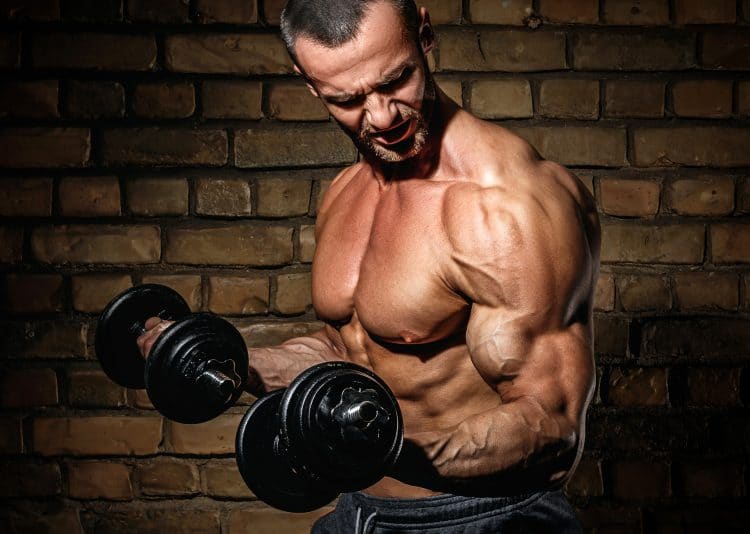
Pro Tip: At the top of each rep, supinate your wrists (turn your palms up) to fully contract the biceps and maximize muscle activation.
| Difficulty | Progression | Regression |
| Beginner | Hammer Curls, Preacher Curls | Concentration Curls, Cable Curls |
Just a few of your options include:
- Dumbbell curls
- Barbell curls
- EZ bar curl
- Hammer curls
- Incline curls
- Concentration curls
- Preacher curls
- Cable curls
Best Pull Workout For Building a Jacked Physique
Here is a balanced workout incorporating compound movements for overall strength and isolation exercises for targeted muscle growth. Perform this twice weekly for optimal results.
| Exercise | Sets | Reps | Rest (minutes) |
| Deadlifts | 3 | 8-12 | 2-3 |
| Pull-ups/Chin-ups | 3 | 8-12 | 1-2 |
| Barbell Bent-Over Row | 3 | 8-12 | 1-2 |
| Single-Arm Dumbbell Row | 3 | 8-12/arm | 1-2 |
| Bicep Curls | 3 | 10-15 | 1-2 |
Wrapping Up
There is absolutely nothing wrong with doing lots of pushing exercises for your chest, shoulders, and triceps. But, you mustn’t neglect your back and biceps by doing too few pulling exercises.
Maintain muscular balance by doing a pull exercise for every pushing exercise in your training program.
You can do this by doing push/pull supersets, e.g., overhead presses followed by lat pulldowns, or by doing a push workout followed by a pull workout that contains the same number of exercises and sets.
However you do it, doing as much pulling as pushing will help you sculpt a better physique, improve your posture, increase athletic performance, and ward of injuries.
Get the best from your back and biceps workouts with these 13 best pull exercises.

